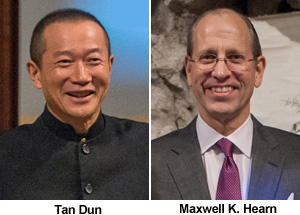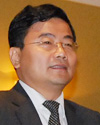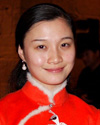| Video |
|
| Recorded live in The Astor Court at the Metropolitan Museum of Art in New York City on November 30 | |
| Audio |
|
 |
"When the sound of the birds and water came back it was so dramatic I thought to myself 'My god, this is opera... This is why they used to perform opera in the garden, instead of on a stage."
——Tan Dun
Chinese composer
"He [Tan Dun] has really transformed world music by his amazing integration and blending of Western and Eastern traditional music, the blending of classical with contemporary musical form."
——Maxwell K. Hearn Director of Asia Department of the Metropolitan Museum of Art |
|
|
|
Did You Know |
| Artists |
The Astor Court |
Kunqu Opera |
|
|
|
While shadow puppetry is the latest Chinese item to make the UNESCO list, Kunqu Opera was the first to be inscribed onto it in 2001. Efforts to invigorate this ancient art have already been rewarded.
"As a living performing art, Kunqu Opera should be constantly developed with the changes in real life," said Dong Wei, Director of the Arts Department of the Ministry of Culture, at a meeting to celebrate the 10th anniversary of Kunqu Opera's listing in Beijing in 2011.
With a history of over 600 years, Kunqu Opera is known as the mother of all operas in China. The opera sounds hauntingly graceful. It features good control of the voice and rhythm. When performed, the opera is accompanied by various kinds of traditional Chinese musical instruments. However, this ancient performing art was on the verge of extinction before 2001. | |
|
 |
Quotes
|
 |
|
 | | Zhu Wanjin, Deputy Consul General of the Consulate General of China in New York | |
"This year marks the 40th anniversary of the establishment of China-U.S. diplomatic relations. It is very valuable, at this moment, to bring the most well-known classical work of Kunqu Opera in China to the stage at the Metropolitan Museum of Art in New York--the world's cultural center ... This is undoubtedly a successful starting point for the traditional Chinese opera to gain popularity among western audiences." |  | | Zhang Ran, Actress portraying heroine Du Liniang | | "The stage at the Metropolitan Museum of Art is much smaller than the one at Zhujiajiao (a naturalistic garden in Shanghai). We are much closer to the audience in [the New York Met's] Astor Court. Every movement and expression on our faces and in our eyes is closely observed by the audience, which is a greater challenge for us."
| |
 |
Review
|
 |
|
"The Astor Court seemed ideal for this intimate tale and its delicate instrumentation. Mr. Tan's interpolations enhanced the musical palette with a different, insinuating color, emphasizing the dreamy, supernatural character of the work."
"The garden version hews far more closely to the traditional opera, with just a few snippets of Mr. Tan's more Western-inspired music tucked seamlessly into its flow."
—The Wall Street Journal | |
 |
Related Reports
|
 |
|
|
 |
Useful Links
|
 |
|
|
|
|